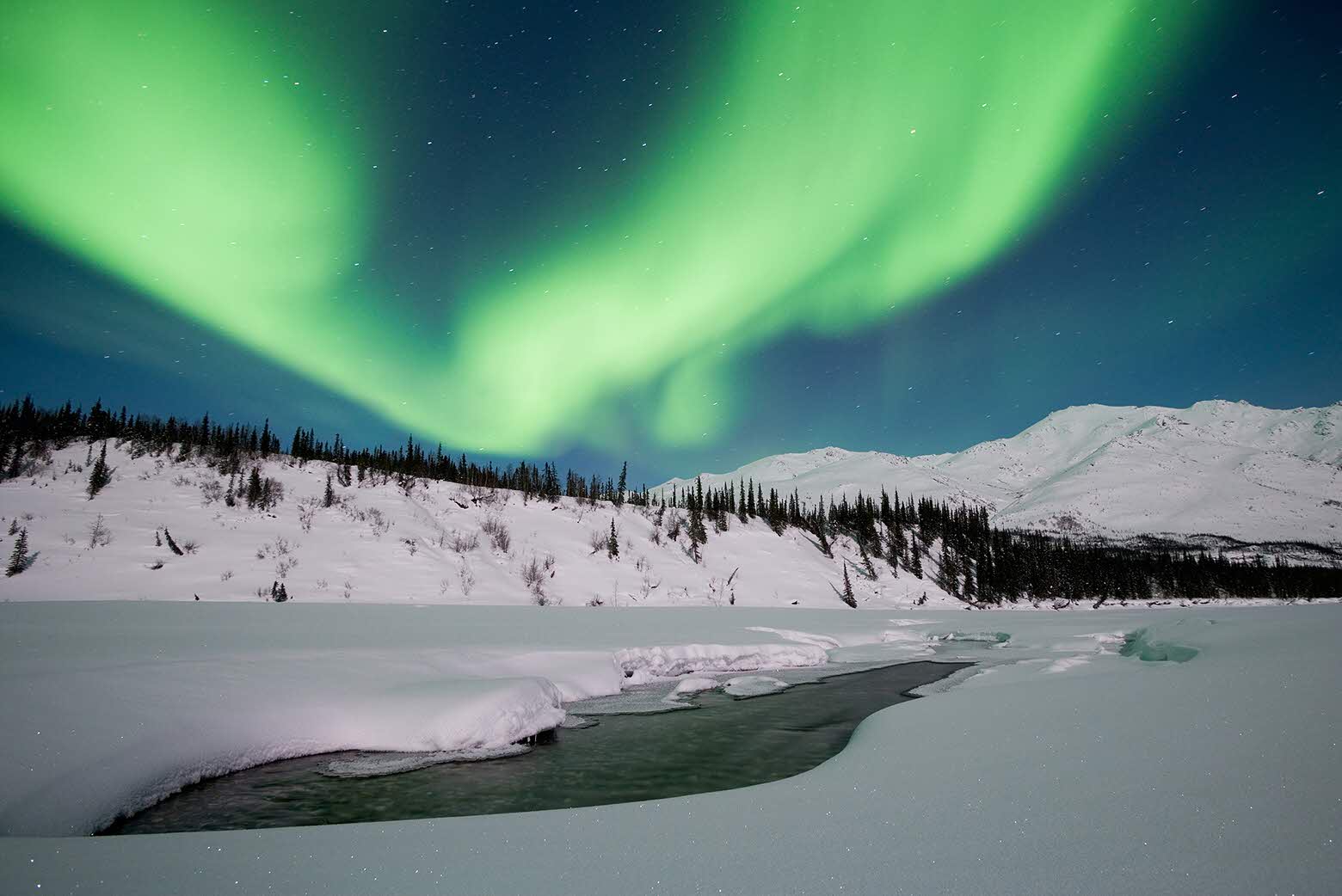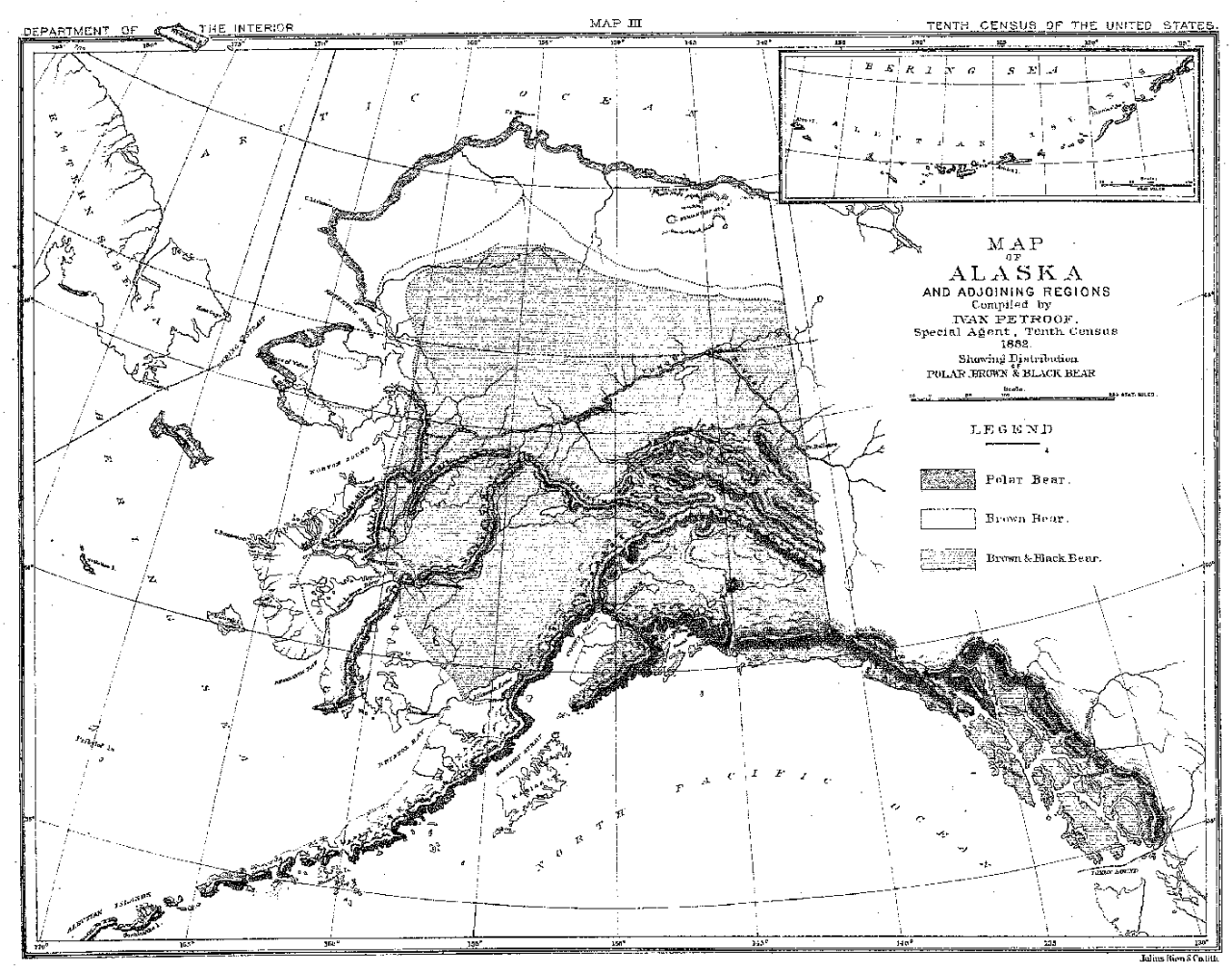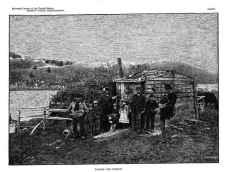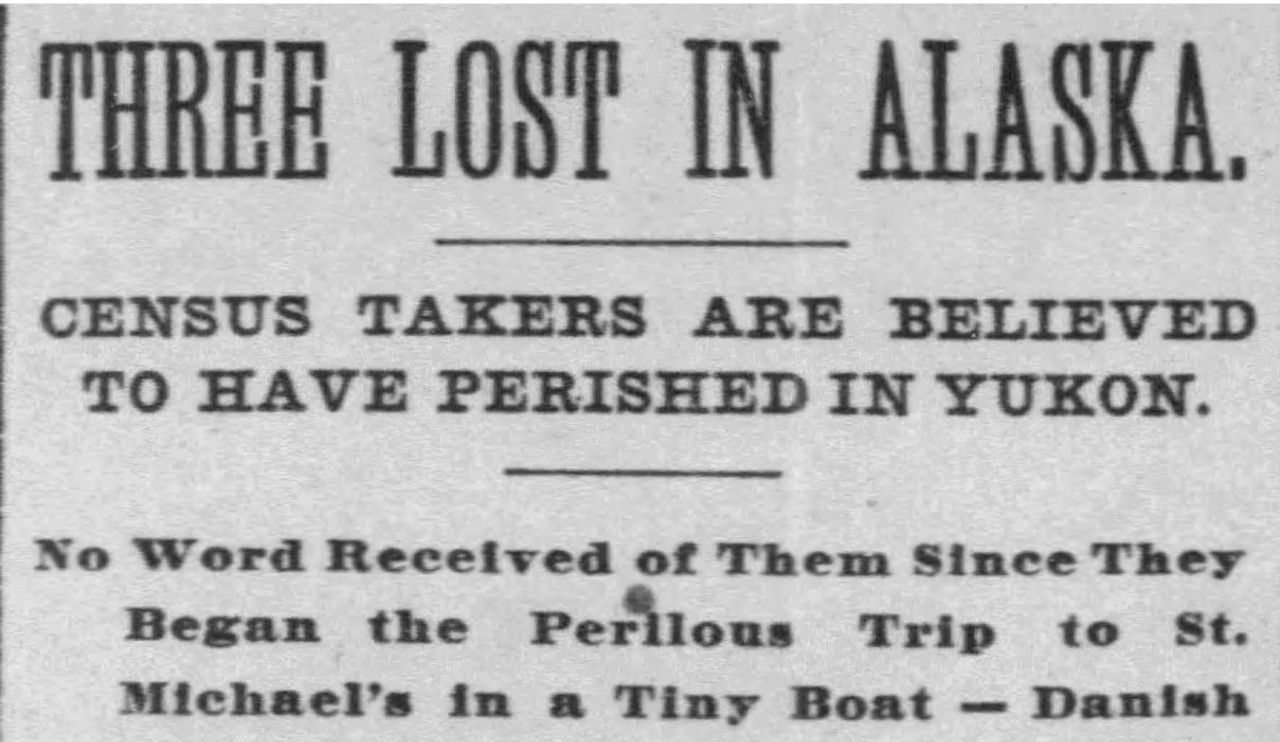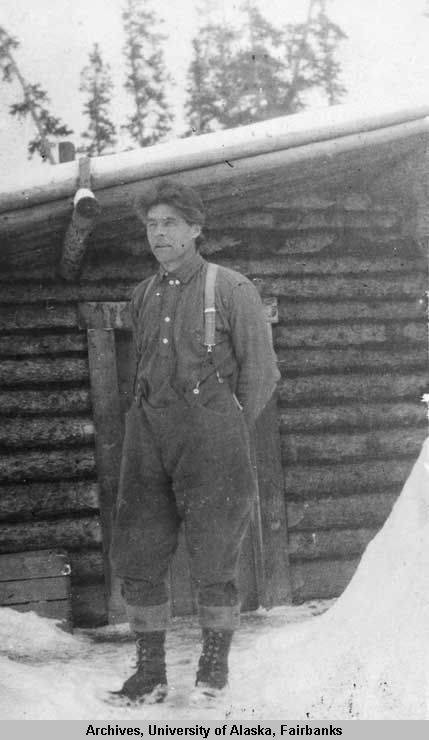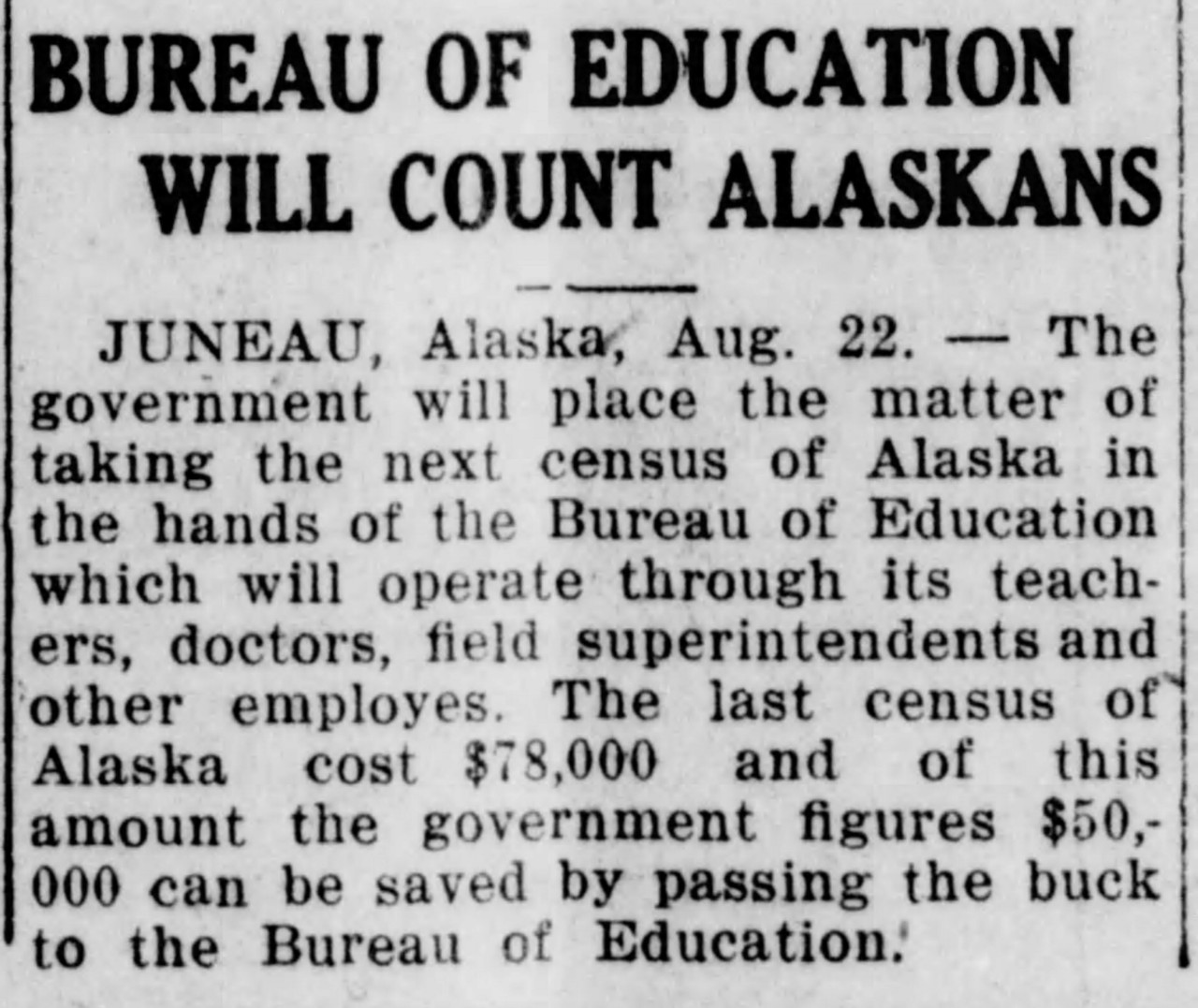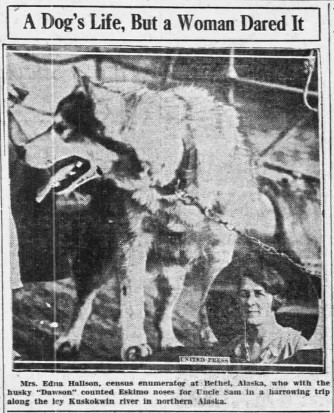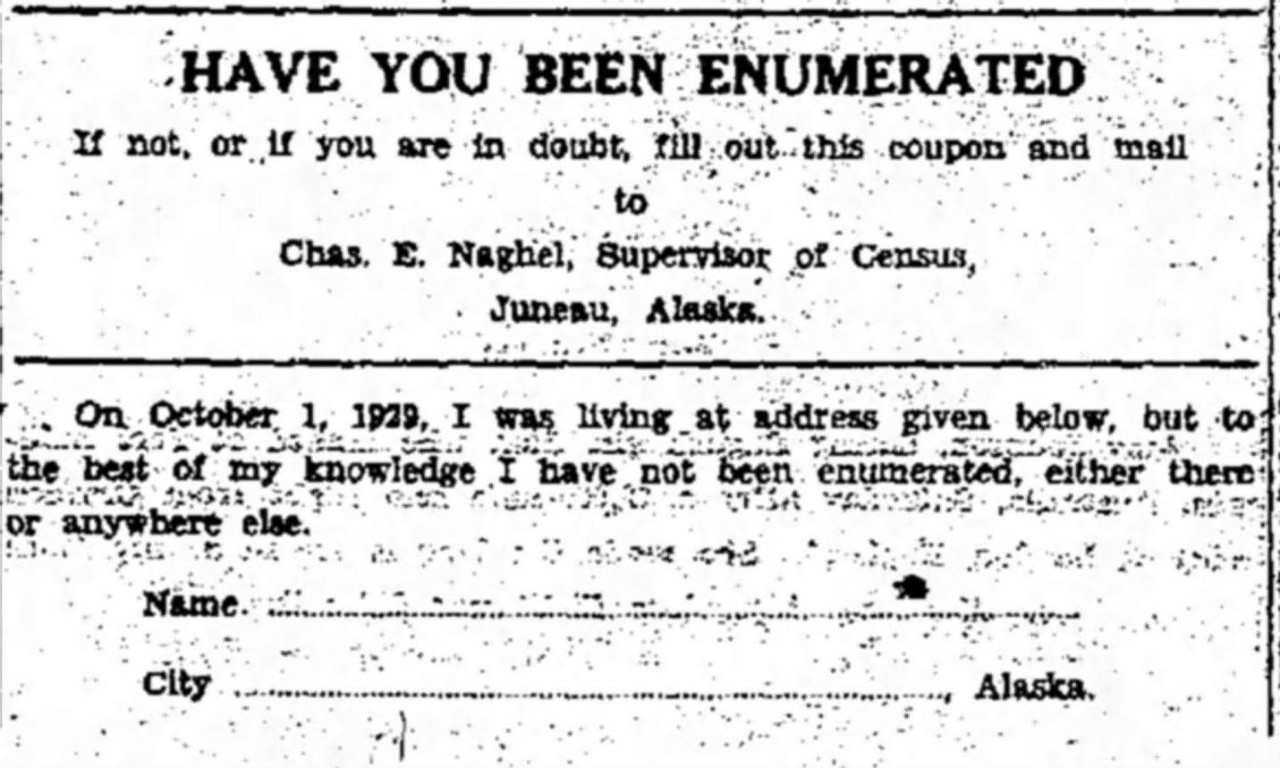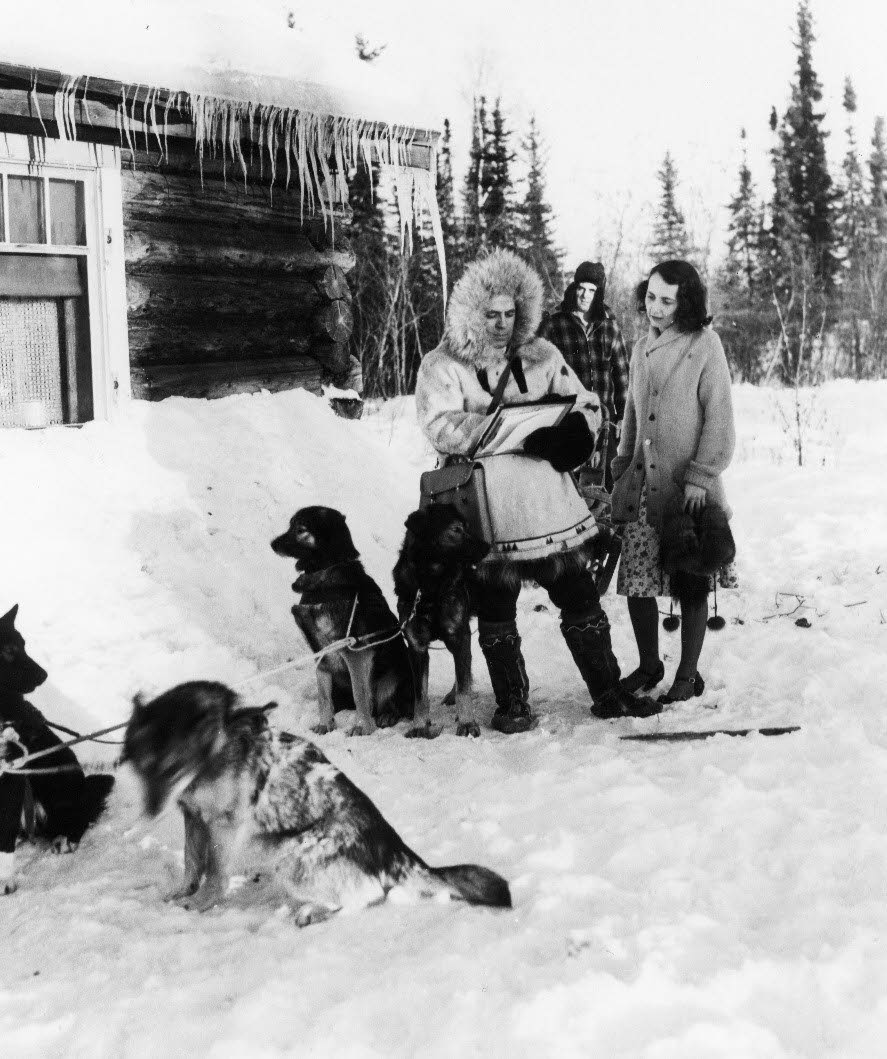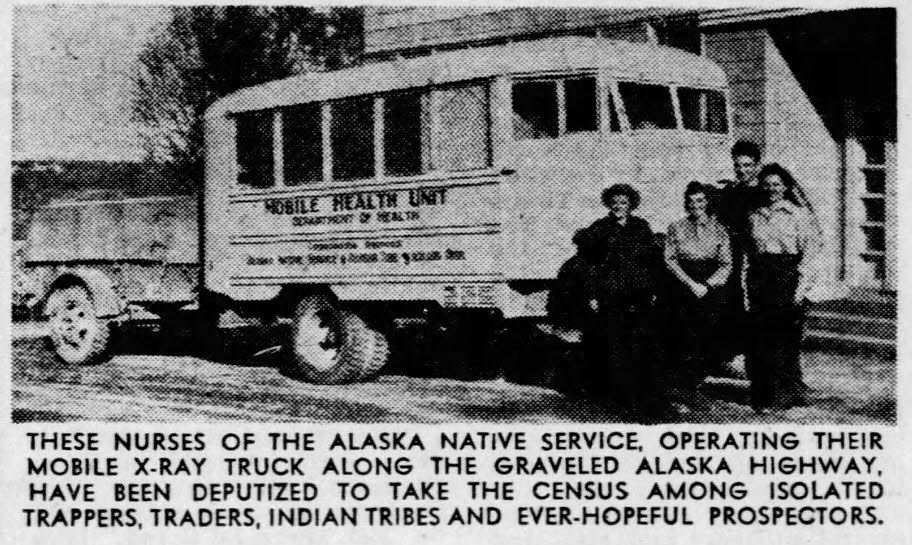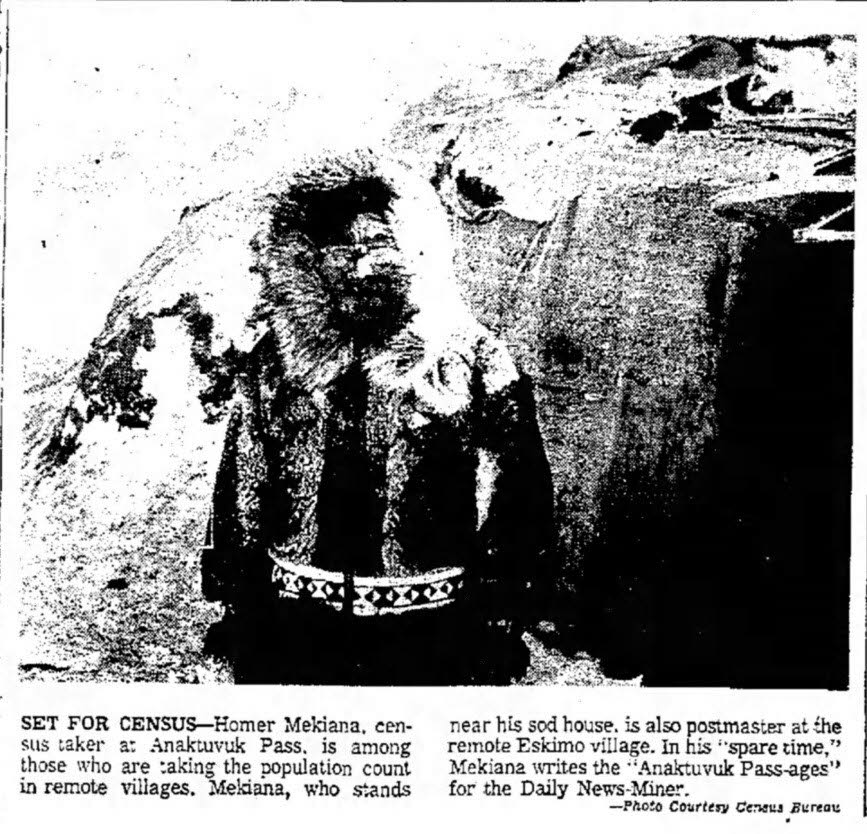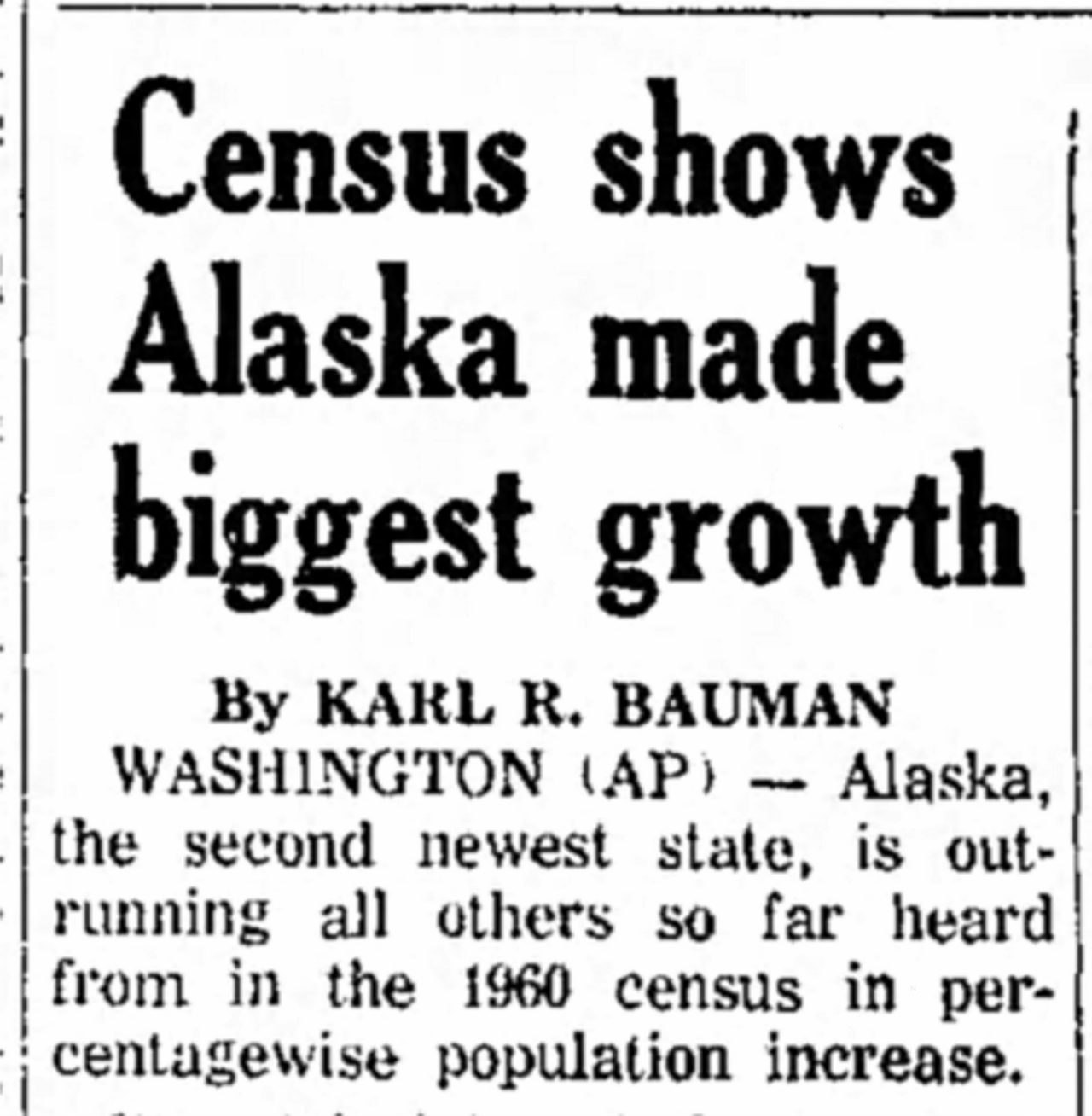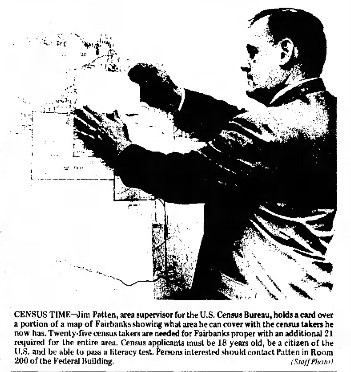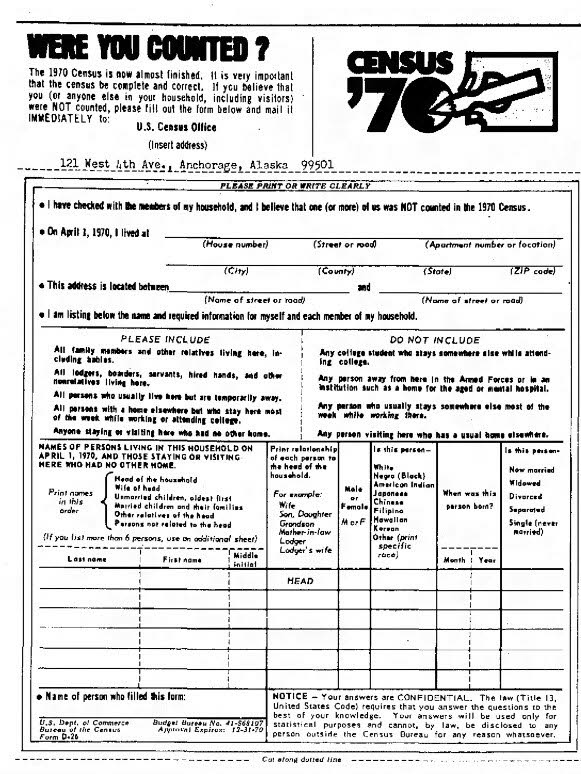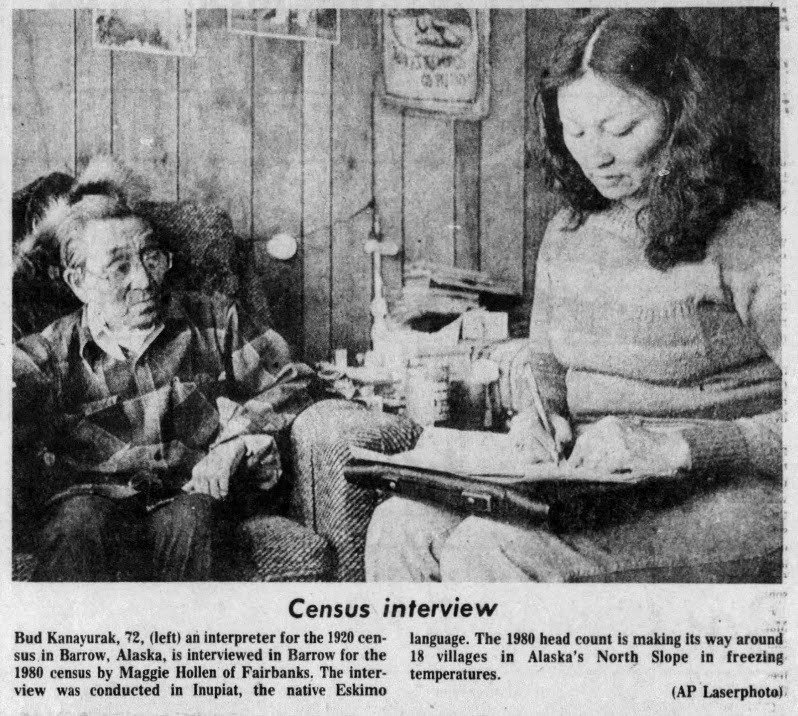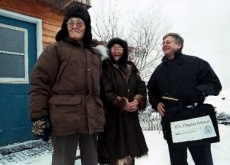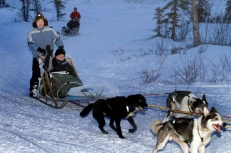Getting to Hard-to-Reach Villages Before Spring Thaw and Start of Hunting Season
The April 1, 2020 census count will begin months earlier in Alaska’s Toksook Bay, a rural village on the Bering Sea that can only be reached by dog sled, snow machine or bush plane when the ground is still frozen.
Counting people who live in hard-to-reach villages in the northernmost parts of the United States has been a challenge for the Census Bureau every decade since 1870. Even today, large portions of Alaska are not connected by roads and have spotty mail service.
Census enumerators start knocking on doors in Alaska in January to count people where they live before the spring thaw and before residents leave their villages to fish and hunt.

The 2020 Census will be available online, but that may not be an option for remote villages where internet connectivity is poor.
That’s why Census enumerators start knocking on doors in Alaska in January to count people where they live before the spring thaw and before residents leave their villages to fish and hunt. The next count will start Jan. 21 in 2020.
Let’s take a tour of the first census counts in Alaska through the centuries:
1870
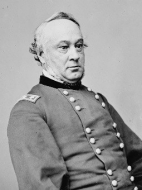
In 1870, the U.S. Army. Under the command of Major General Henry W. Halleck, conducted the first official American census of the territory. His count showed 82,400 people. But because of duplication of tribes listed under different names, the inclusion of a tribe that didn’t even exist, and some exaggerated estimates, this number was not considered reliable.
1880
Census Day was June 1 and enumerators completed their work by July 1. An April 20, 1880 amendment to the original census legislation authorized the collection of information on the people and resources of Alaska.
Beginning in Attoo (Attu), the extreme western boundary of the Aleutian Islands, in May 1880, Ivan Petrof and a few agents attempted to visit every part of the territory. This took them through the summers of 1880 and 1881.
Petrof transmitted the data back to the Census Office on Aug. 7, 1882. The subsequent publication, “Report on the Population, Industries, and Resources of Alaska”, not only reported the population count but also detailed the culture, economy, and topography of the area.
Final population count: 33,426.
1890
Once again under the management of Ivan Petrof, the count in Alaska began in southeastern Alaska in February 1890 and lasted into 1891. Census enumerations for the rest of the country started on June 2, 1890.
Final population count: 32,052.
1900
The census supervisor arrived in Alaska in April 1899 and some enumerators began collecting data as early as July 1899, well ahead of the official Census Day of June 1, 1900.
Although travel was much easier thanks to improved infrastructure and communication after the Gold Rush, enumerators did not complete their count until October 1900.
The Census Bureau thought it had lost three enumerators — William Pine-Coffin and Charles and Josephine Robinson — on the Yukon River. Although delayed, the three eventually made it to St. Michael with their census forms intact. Mrs. Robinson later wrote of her adventures for McCall’s magazine.
Final population count: 63,592.
1910
Census Day was April 15, but enumeration in Alaska started in Juneau on Dec. 27, 1909. This area alone took more than a month to count and did not finish until Feb. 4, 1910.
By special arrangement with the U.S. Commissioner of Education, three of the four census districts in Alaska relied on school superintendents/teachers to complete the majority of census work. Census takers helped Alaska natives estimate their ages based on local historical events for the year and seasonal activities for the month.
Final population count: 64,356.
1920
The Census Bureau made arrangements with the Bureau of Education for its Commissioner of Education in Seattle to take the census in Alaska.
Due to the weather and dispersion of the population, the Census in Alaska began in southwestern Alaska in July 1919, rather than the regular Census Day of Jan. 1, 1920. Six local school superintendents acted as supervisors, while teachers acted as the enumerators.
Final population count: 55,036
1930
Enumerations started Oct. 1, 1929 because harsh weather conditions that made travel to remote areas difficult and time-consuming, as accounted for in the 1929 Census Act. The rest of the nation began their counts on April 1, which remains Census Day to this day. The Alaska count was completed in May 1930.
Final population count: 59,278.
1940
The count started October 1, as soon after as enumerators could be assigned and trained. The early start, and Congress’ late approval of the addition of a housing schedule on top of the decennial census, meant some Alaskan enumerators had to survey their areas twice.
As in the past, the Census Bureau hired many teachers to act as enumerators, including Kathryn Dyakanoff Seller.
Final population count: 72,524.
1950
The Census Bureau decided to start Alaska’s census at the same time as the rest of the country on April 1, 1950 (although enumerators visited a few remote areas near the Bering Strait and the Arctic coastline beginning Feb. 1).
Although the rest of the country completed its count by May 1, Alaska’s continued into June.
This was done at the request of Alaskan leaders who protested that past counts missed the portion of the population that moved to the continental United States for the winter.
An accurate count was especially important as Congress was getting ready to vote on Alaska’s statehood.
Final population count: 128,643
St. Louis Post Dispatch, April 4, 1950
1960
This was the first census conducted after Alaska received statehood on Jan. 3, 1959.
In order to allow Alaska and the other new state, Hawaii, to have representation, the House of Representatives temporarily grew to 437 members. After 1960 census reapportionment, the number would go back to the 435 mandated by law.
Specially-trained teachers began enumeration in remote communities in January. The first village to return its data was Shungnak, on the Kobuk River, north of the Arctic Circle.
However, the majority of census collection began on April 1, with the rest of the United States. Alaska led the country in population percentage growth as it grew 75.8%.
Final population count: 226,167.
1970
As in the past, the census counts began in northern Alaska in January, but the rest of the state followed the national Census Day of April 1.
Although the Census Bureau experimented with and expanded its mail out/mail back program, Alaska still followed the conventional method of enumeration: households received their form in the mail, filled it out, and waited for an enumerator to collect it.
Final population count: 300,382.
1980
In 1980, Census Day was Jan. 22 for Point Hope, Barrow and 16 other villages in northern and western Alaska.
The majority of Alaska followed the April 1 date set for the rest of the country. Although, due to weather and travel issues, it took until October to complete an accurate count in some of the more remote areas.
Building on the 1970 testing, Census Bureau extended mail out/mail back to areas containing 95.5% of housing units. However, Alaska still followed the conventional method of having enumerators collect census forms.
Final population count: 401,851.
2020
Census Bureau Director Steven Dillingham is scheduled to start the count for the 2020 Census in the rural village of Toksook Bay on Jan. 21.
Local census takers will then start enumerating the approximately 240 remote villages and communities in Alaska.
Final population count: to be determined.
Related Statistics
Subscribe
Our email newsletter is sent out on the day we publish a story. Get an alert directly in your inbox to read, share and blog about our newest stories.
Contact our Public Information Office for media inquiries or interviews.
-
PopulationComplete 2020 Census Count Vital for Tribal AreasJune 25, 2019Small and large tribal areas form complete count committees to promote participation in the 2020 Census.
-
PopulationWho Knew? Partnership Specialists Bridge Gaps in Local CommunitiesMay 28, 20191500 Partnership specialists are being hired to locally engage with communities, especially in hard-to-count population areas.
-
PopulationKnowing Census Data Benefit Communities May Increase 2020 ResponseMay 17, 2019A 2018 Census Bureau survey shows that the strongest motivator for people to respond to the census is knowing that it informs public funding decisions.
-
EmploymentThe Stories Behind Census Numbers in 2025December 22, 2025A year-end review of America Counts stories on everything from families and housing to business and income.
-
Families and Living ArrangementsMore First-Time Moms Live With an Unmarried PartnerDecember 16, 2025About a quarter of all first-time mothers were cohabiting at the time of childbirth in the early 2020s. College-educated moms were more likely to be married.
-
Business and EconomyState Governments Parlay Sports Betting Into Tax WindfallDecember 10, 2025Total state-level sports betting tax revenues has increased 382% since the third quarter of 2021, when data collection began.
-
EmploymentU.S. Workforce is Aging, Especially in Some FirmsDecember 02, 2025Firms in sectors like utilities and manufacturing and states like Maine are more likely to have a high share of workers over age 55.
